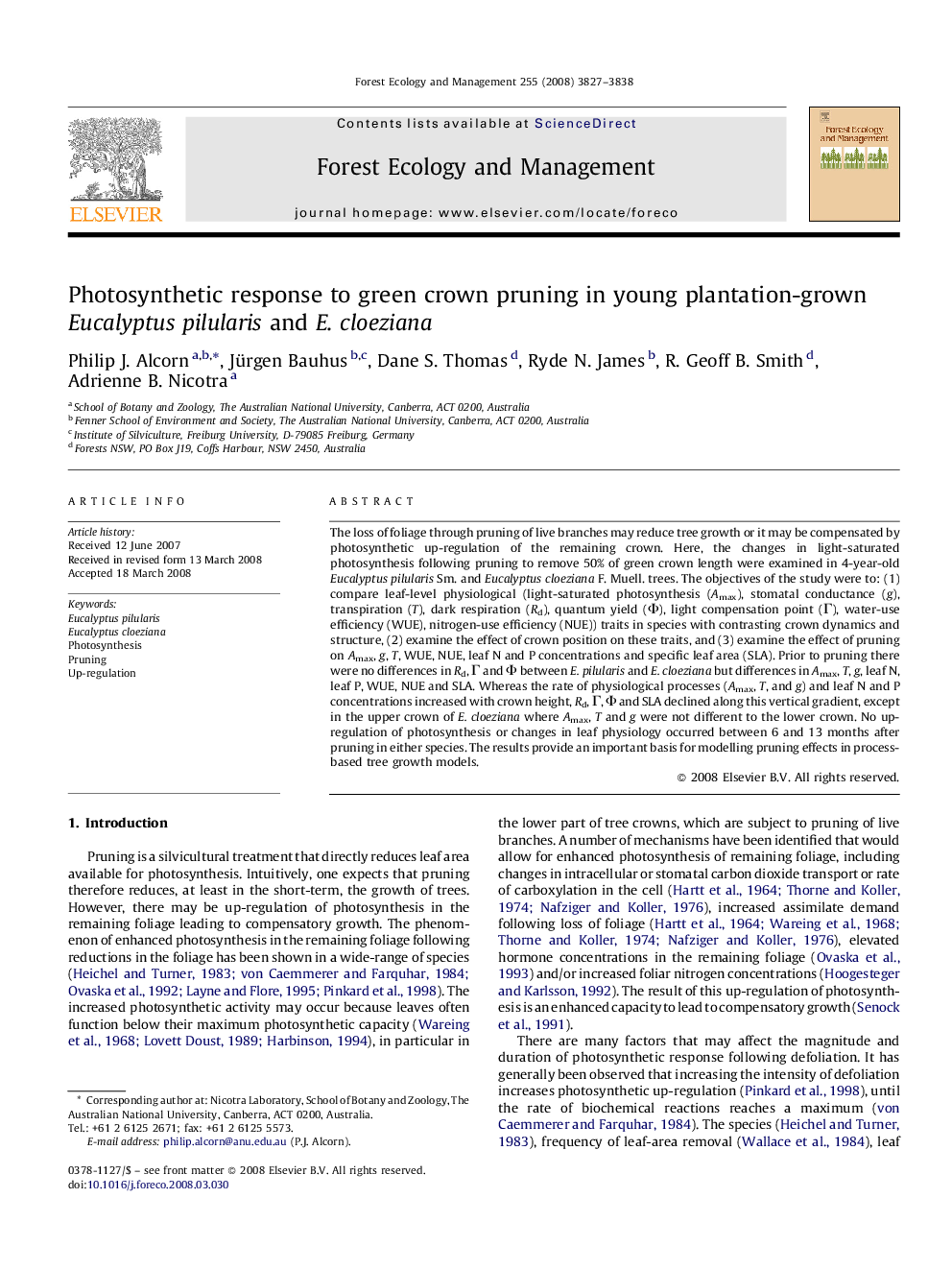| Article ID | Journal | Published Year | Pages | File Type |
|---|---|---|---|---|
| 89330 | Forest Ecology and Management | 2008 | 12 Pages |
The loss of foliage through pruning of live branches may reduce tree growth or it may be compensated by photosynthetic up-regulation of the remaining crown. Here, the changes in light-saturated photosynthesis following pruning to remove 50% of green crown length were examined in 4-year-old Eucalyptus pilularis Sm. and Eucalyptus cloeziana F. Muell. trees. The objectives of the study were to: (1) compare leaf-level physiological (light-saturated photosynthesis (Amax), stomatal conductance (g), transpiration (T), dark respiration (Rd), quantum yield (Φ), light compensation point (Γ), water-use efficiency (WUE), nitrogen-use efficiency (NUE)) traits in species with contrasting crown dynamics and structure, (2) examine the effect of crown position on these traits, and (3) examine the effect of pruning on Amax, g, T, WUE, NUE, leaf N and P concentrations and specific leaf area (SLA). Prior to pruning there were no differences in Rd, Γ and Φ between E. pilularis and E. cloeziana but differences in Amax, T, g, leaf N, leaf P, WUE, NUE and SLA. Whereas the rate of physiological processes (Amax, T, and g) and leaf N and P concentrations increased with crown height, Rd, Γ, Φ and SLA declined along this vertical gradient, except in the upper crown of E. cloeziana where Amax, T and g were not different to the lower crown. No up-regulation of photosynthesis or changes in leaf physiology occurred between 6 and 13 months after pruning in either species. The results provide an important basis for modelling pruning effects in process-based tree growth models.
